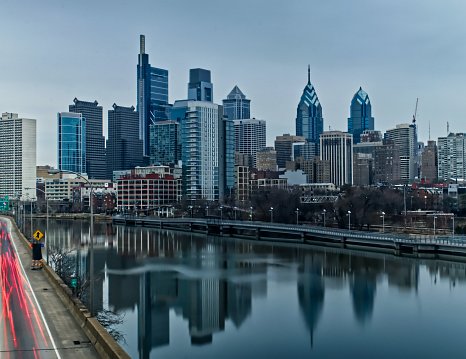Adapting Your Property To Philly’s Ever-Present Flood Risk
Cleaning and managing after a flood

Philadelphia has had its fair share of floods in recent years. The most infamous of these is perhaps Ida, which made landfall on September 1st and caused over $31 million in losses to businesses and homes, according to NPR WHYY. While Ida seemed like a once-in-a-lifetime event, the figures show that, in fact, it was actually just part of a wider trend. While events like Hurricane Ida have really brought home the devastation that flooding causes, Philadelphia and Pennsylvania as a whole is actually a hotbed for flooding events, and that’s always been the case.
Philadelphia’s flooding problem
Philadelphia has always been prone to flooding. Pennsylvania has more flooding events than any of the 50 other states, and much of the state along the Delaware River is 1% floodplain. According to a GridPhilly interview with Josh Lippet, the City of Philadelphia’s floodplain manager, that means there’s a 1% chance every year that the floodplain will experience flooding to the extent seen in Philadelphia through September. That’s fairly high risk compared to other states, where the floodplains are less continuous or isolated.
Furthermore, the natural risk Pennsylvania faces from flooding is only being exacerbated by climate change. According to Lippert, “Flooding is already the number one natural hazard here in Philadelphia, and it’s likely to become more and more prevalent by the end of the century. My colleagues at the Office of Sustainability have done some science around the future of sea-level rise.” In Lippert’s opinion, this will result in larger areas of the state being considered floodplain areas. This will result in more extensive flooding as the years pass, with more homes and businesses at risk.
Protecting your property
It’s important that Philadelphia and Pennsylvania residents understand the risk of floods and take steps to safeguard their home. This starts with organizing your home in a flood-safe fashion, but also extends being ready to go with the supplies and items that you need to mitigate flood damage. Having a strategy for when floods are imminent will help you to be ready when they hit.
Secure your belongings - move your most valuable items to upstairs in your home - this will ensure they are at lowest risk of taking on water damage. Keep supplies of food and water, ready to be taken to the upper portions of your home, in case of severe damage.
Check your property - do you have proper drainage on your home and are your gutters clear of debris? Does water have somewhere to runoff, or will it be trapped on hard surfaces? Conduct maintenance on your property to ensure rain can runoff.
Collect flood supplies - you should have a supply of tools such as sandbags or similar barriers to put out before the flood hits, as this can help to mitigate the spread of the water.
The worst case scenario
If a flood is particularly severe, your property is unlikely to be fully protected unless it’s a specialist building with specific protections. Evacuation may be necessary, and waters may stay in the building for an extended period of time and result in extensive damage. When water recedes it will have caused damage to the property, which needs to be assessed and then cleaned. There are three main types of damage that flooding can bring:
Water Damage - the most straightforward type of damage, water logging can damage furniture, wood and carpets beyond repair, and create long-term dampness in the home that makes proper redecoration impossible.
Mold Growth - mold flourishes in the cold and wet circumstances that floods bring around, and a flood can create several hotspots in the home that will cause long-term health issues if not properly dealt with.
Toxic Spills - in some cases, flooding can create hazardous substance spills in the home, if, for instance, a sewage pipe is overloaded and spills into the street or if a business that uses chemicals undergoes extensive damage.
There are longer-term risks associated with water damage , too. Improperly secured electrics in a home can create severe risks for when the power comes back on, and long-term, improperly restored properties can undergo structural weakening that will threaten the overall integrity of the building.
Penn Jersey can provide these services to properties immediately once water has receded. Getting the experts in early and having water damage assessed for both its extent and the severity of its impacts is important to giving a property the best chance of completely recovering from the impact of flooding. Allowing the home to simply soak in the water it collected through flooding will risk mold growth, structural damage, and the threat of injury from electrical and gas faults. Getting it checked and remediated at the first opportunity is essential.
What’s more, understanding the risks and then adapting your own plan to care for your home will give you the best chance of recovering when Pennsylvania’s next big flooding event comes around. Given the risk of floods that the state endures, and the ever-increasing risk posed by climate change, that’s a good thing to have in your locker.
Image source: Unsplash
